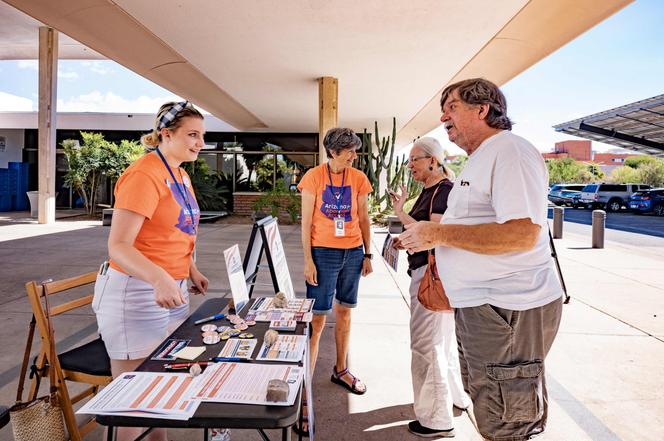


With referendums being held on the subject in 10 US states, the Tuesday, November 5, ballot could turn out to be a plebiscite in defense of abortion in the US. It's not certain, however, that mobilization around a right that American women believed to be untouchable will benefit the Democrats as much as they had hoped. Their candidate, Kamala Harris, who has made defense of the "freedom to choose" one of the main axes of her candidacy, could even indirectly suffer from the divide accentuated by the abortion campaign.
In these 10 states (Arizona, Colorado, South Dakota, Florida, Maryland, Missouri, Montana, Nebraska, Nevada and New York), constitutional amendments to expand or protect access to abortion are being put to the electorate at the same time as the choice of president and members of Congress. Two of these are key states in the presidential election: Arizona and Nevada. Two others are crucial for control of the Senate: Montana and Florida.
The questions are variously formulated. In states where abortion is legal beyond the 15th week (Colorado, Nevada, Maryland and Montana), it's a question of guaranteeing access or extending it, for example, by authorizing (Colorado) the use of public funds to reimburse voluntary termination of pregnancy. In the others (Arizona, Missouri, South Dakota and Florida), lifting of current restrictions is at stake, with concrete consequences for millions of women. In Nebraska, two texts are in competition. In New York State, "Proposition 1" is part of a broader context: It aims to protect a set of "fundamental rights," including abortion, but the word does not appear in the text.
Polls show that the referendum proposals are likely to be approved in most states, with the exception of highly conservative South Dakota, where abortion is totally banned unless the mother's life is in danger. Even in Missouri, whose Assembly is two-thirds controlled by Republicans, "Amendment 3" exceeds 50% approval in polls. In Florida, "Amendment 4," which proposes to protect the right to abortion up to fetal viability, is expected to reach 50%, but needs 60% of the vote to pass, a threshold that has been crossed in similar consultations in California or Vermont, but never in a Republican state.
Seven ballots have been cast since the Supreme Court struck down federal abortion protection in June 2022. Each time, voters have rejected attempts to restrict access to abortion to six weeks or ban it altogether, including in Republican states like Kentucky, Kansas and Ohio. Turnout increased, something which benefited the Democrats in the 2022 midterm elections. As in every presidential election, turnout is expected to be high, and even higher this year, given the existential nature of the Trump-Harris duel.
You have 59.58% of this article left to read. The rest is for subscribers only.
